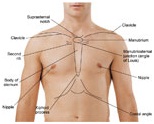Assignment
Text book: Seidel's Guide to Physical Examination 8th edition.
Chapter 9: Lymphatic System.
Chapter 13: Chest And Lungs.
Respond to all the questions and include the questions and answers in the Paper work.
a) What comprises the lymphatic system
b) Which set of lymph nodes is a common site of metastatic disease, and why?
c) Mrs. Kline, a postoperative patient who has just undergone a right modified mastectomy, is found to have edema of the right arm. What is the cause of the edema, and what teaching is necessary to help Mrs. Kline?
d) Mr. Jackson is a 76-year-old nursing home patient who has persistent wound infections and upper respiratory infections. What is the cause of Mr. Jackson's recurring infections?
e) Describe the correct way to examine the lymphatic system
f) Define lymphedema
g) Provide the differential diagnosis of mumps versus cervical adenitis
h) What is elephantiasis?
JS is a 17-year-old adolescent who presents to the office with complaints of fatigue and overall body aches. He states that several of his classmates have been home sick as well. His past medical history is negative for medical illness, but he had myringotomy tubes placed when he was 5 years old. The patient lives with his mother, stepfather, and two siblings.
What is the most common cause of his diagnosis?
During the history, what positive findings will be in the HPI?
On physical examination of JS, what positive assessment results would you expect to find?

Name the primary muscles of respiration.
What is a normal rate of respiration per minute in an adult?
Prepare a teaching pamphlet on the effects of smoking on the chest and lungs.
Define the following terms and discuss when the examiner might see these conditions:
o Dyspnea
o Orthopnea
o Apnea
o Paroxysmal nocturnal dyspnea
o Platypnea
o Tachypnea
o Bradypnea
o Hyperpnea
o Kussmaul breathing
o Hypopnea
o Periodic breathing (Cheyne-Stokes)
o Air trapping
o Biot respiration
o Ataxia
o Retractions
What they would expect to find when assessing children or adolescents with the assigned condition.
o Cystic fibrosis
o Epiglottis
o Croup
o Tracheomalacia
o Bronchiolitis
o Respiratory distress syndrome
Differentiate between a pneumothorax and a hemothorax.
List risk factors associated with respiratory disability.
HG is a 62-year-old man with a significant history of COPD and emphysema. He has a positive PMH of frequent episodes of pneumonia. His social history includes cigarette smoking for 45 years. Identify your findings on HG and the emphysema.
a) What is the primary etiology of the emphysema?
b) What are the expected findings on inspection, palpation, percussion, and auscultation?
c) What are the subjective and objective findings in HG's presentation?
Format your assignment according to the give formatting requirements:
a. The answer must be double spaced, typed, using Times New Roman font (size 12), with one-inch margins on all sides.
b. The response also includes a cover page containing the title of the assignment, the course title, the student's name, and the date. The cover page is not included in the required page length.
c. Also include a reference page. The references and Citations should follow APA format. The reference page is not included in the required page length.